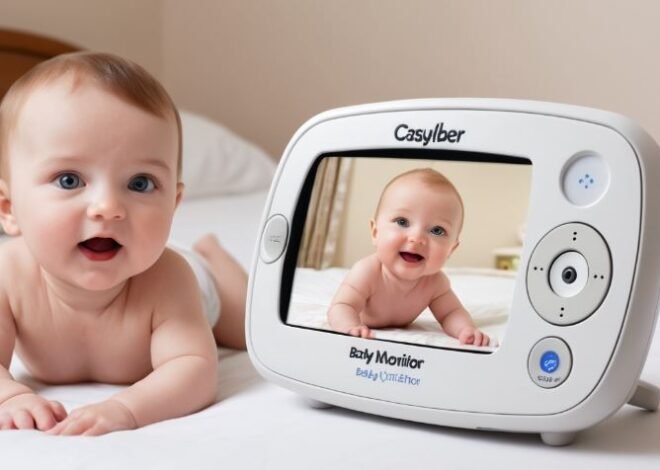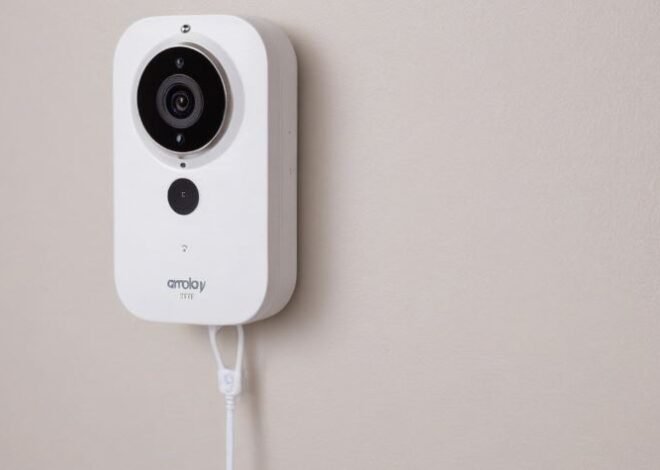
How Much Is a Baby Monitor?
The cost of a baby monitor can vary widely, ranging from around $50 to $300 or more, depending on features, brand, and technology. Basic audio monitors are more budget-friendly, while video monitors with advanced functionalities may be on the higher end.
The price of a baby monitor is influenced by several factors, including the type of monitor, brand reputation, and additional features. Basic audio monitors, which transmit sound only, tend to be more affordable, making them a practical choice for parents who prioritize auditory monitoring. On the other hand, video monitors, equipped with cameras for both audio and visual feedback, are generally more expensive due to the added technology and features they offer.
The decision on how much to invest in a baby monitor depends on individual preferences and needs. While a basic audio monitor may suffice for some parents, others may opt for the enhanced capabilities and peace of mind provided by a video monitor. Assessing the features that align with caregiving priorities and budget considerations helps parents make an informed decision about which type of monitor to purchase.
Table of Contents
ToggleDo I Really Need a Baby Monitor?
The need for a baby monitor depends on individual circumstances, parenting preferences, and the layout of the home. While some parents find baby monitors essential for peace of mind, others may feel comfortable without them.
Whether a baby monitor is deemed necessary is a subjective decision influenced by various factors. For parents with larger homes or those who want to monitor the baby’s sleep and activities from a distance, a baby monitor can provide valuable reassurance. The ability to hear or see the baby remotely allows parents to respond promptly to the baby’s needs, especially during nap times or nighttime sleep.
However, some parents may feel comfortable without a monitor, particularly if they share a small living space or if they prefer to physically check on the baby periodically. Factors such as the baby’s sleep patterns, parental comfort levels, and the convenience of real-time monitoring play a role in determining the necessity of a baby monitor. Ultimately, it is a personal choice, and parents should assess their individual circumstances to decide whether a baby monitor aligns with their caregiving preferences.
Is a Video Baby Monitor Necessary?

The necessity of a video baby monitor depends on parental preferences and the desire for visual feedback. While audio monitors provide essential information, video monitors offer an added layer of reassurance through visual observation.
Video baby monitors provide parents with both audio and visual information about their baby’s sleep and activities. The decision on whether a video monitor is necessary is influenced by factors such as parental comfort levels, the baby’s sleep patterns, and the desire for a more comprehensive monitoring experience.
Audio monitors are effective in conveying essential information about the baby’s sounds and movements, providing auditory reassurance to parents. However, some parents may find the visual element offered by video monitors invaluable, especially for observing sleep positions, comfort, and any potential safety concerns. Video monitors can be particularly useful for parents transitioning their baby from a bassinet to a crib or monitoring a larger sleep space.
Ultimately, the necessity of a video baby monitor is a personal choice. Parents should consider their comfort levels, the layout of the baby’s sleep area, and their caregiving preferences when deciding whether to opt for a video monitor or stick with an audio-only version.
When Should I Turn Off Baby Monitor?
The optimal time to turn off a baby monitor depends on the child’s developmental stage, sleep patterns, and parental comfort levels. Many parents gradually phase out the use of a baby monitor around the age of 2 to 3 years.
The decision on when to turn off a baby monitor is influenced by various factors, including the child’s developmental milestones and the parent’s comfort levels. During the early years, when infants nap frequently and parents seek constant reassurance, a baby monitor can be highly beneficial. As the child grows and becomes more independent, the need for continuous monitoring may decrease.
Many parents find that around the age of 2 to 3 years, when children are more communicative and can express their needs, the reliance on a baby monitor naturally diminishes. The transition from a crib to a bed often aligns with a reduction in the use of a baby monitor. Parents may choose to turn off the monitor once they feel confident in the child’s ability to communicate and independently navigate their sleep environment.
It’s essential for parents to gauge their child’s developmental stage, communication abilities, and sleep patterns when considering when to turn off the baby monitor. Open communication among caregivers ensures a coordinated approach to transitioning from monitor use.
How to Hide Baby Monitor Cord?
Hiding a baby monitor cord can be achieved through various methods, such as using cable organizers, concealing it along baseboards, or utilizing cord covers. Ensuring safety, preventing tripping hazards, and maintaining a clean aesthetic are key considerations.
Concealing a baby monitor cord is important for both safety and aesthetic reasons. Tripping hazards can be minimized by using cable organizers or cord covers that secure the cord along the baseboards or furniture. Many cord management solutions are available, ranging from adhesive clips to flexible conduit tubes that encase the cord discreetly.
Cord covers, designed to blend with the room’s décor, offer an additional layer of safety by preventing access to the cord and reducing the risk of entanglement. Securing the cord along the edges of the room or using existing furniture as a natural concealer helps maintain a clean and organized appearance.
Parents should prioritize safety when hiding a baby monitor cord, ensuring that it is securely fastened and out of reach of the child. Additionally, a well-hidden cord contributes to a visually appealing and clutter-free environment in the baby’s room. Regularly checking the cord’s condition and adjusting its placement as needed ensures ongoing safety and a tidy appearance.
Do I Need a Baby Monitor for a 2-Year-Old?

The need for a baby monitor for a 2-year-old depends on factors such as the child’s sleep patterns, the layout of the home, and parental comfort levels. While some parents may continue to use a monitor for reassurance, others may find it unnecessary as the child becomes more independent.
Whether a baby monitor is needed for a 2-year-old varies among parents and is influenced by individual circumstances. Some 2-year-olds may continue to nap during the day, making a monitor valuable for parents who want to remotely observe their child’s sleep patterns and activities. The ability to hear or see the child from a distance provides peace of mind and allows parents to respond promptly to any needs.
On the other hand, some parents may find that by the age of 2, their child is more communicative and capable of expressing needs independently. In such cases, the continuous use of a baby monitor may become less crucial. Factors such as the layout of the home, the child’s sleep behaviors, and parental comfort levels contribute to the decision on whether to continue using a monitor for a 2-year-old.
Ultimately, the need for a baby monitor for a 2-year-old is a personal choice, and parents should assess their unique circumstances and preferences to determine whether monitoring remains beneficial during this developmental stage. Regular communication among caregivers ensures a unified approach to caregiving and monitoring decisions.
Related Posts

How Baby Monitor Works?

How Baby Monitor Works?

